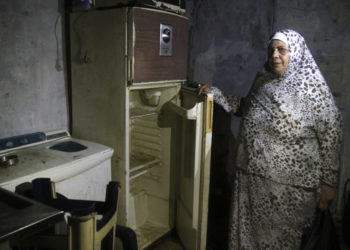Child labor, including in the field of agriculture, is usually linked to extreme poverty in an area or country. Though Lebanon is considered to be a high middle-income country, its consistent struggle with poverty and income inequality in rural areas made it no exception to increases in child workers.
About 28.5 percent of the population in Lebanon is considered poor using the upper poverty line, according to a new report by the United Nations Children’s Fund (UNICEF) and the Food and Agriculture Organization (FAO) released on Wednesday. This equates to around one million Lebanese living in conditions of poverty, while some 300,000 individuals live in extreme poverty unable to meet their most basic food and non-food needs.
The World Bank has determined that elevated poverty in Lebanon has remained unchanged for the past 25 years, and it is one of the reasons behind the continuous use of child labor in the country’s agriculture sector.
According to the UNICEF and FAO report, the predominance of child labor in agriculture is usually explained by the proliferation of vulnerable populations in rural areas. But at the same time, the informal nature of the sector and its demand for cheap and low-skilled labor have also been exacerbating the problem.
Agriculture is one of the three most dangerous sectors for children to work in, along with construction and mining. A major risk to the children’s health is the exposure to chemicals in pesticides and fertilizers as well as longterm damage from sun exposure and chronic pain from carrying heavy weights for hours on end, the report said.
Despite the hazardous conditions, the number of children working in agriculture has increased in Lebanon, particularly since the beginning of the crisis in Syria in 2011. While the number of Syrian children working has increased, so has the number of Lebanese, tripling between 2009 and 2016 from 1.9 to 6 percent.
Agriculture accounts for 80% of GDP in the poorest regions of #Lebanon. But lack of access to water remains the #1 challenge for farmers. @UNDP_Lebanon’s canals open Lebanese farmers’ road to #SDGs. #HLPF2018 https://t.co/DvArc2fpXi
— UN Development (@UNDP) July 5, 2018
“I prefer to collect grapes where I can sit under the vines away from the sun,” a 12-year-old Syrian boy was quoted in the report as saying. The majority of interviewed children considered long exposure to the sun the most exasperating aspect of their work. However, some felt it was their duty to help their parents.
“I am learning my father’s profession and I am helping him at the same time. I am not facing any danger,” a 17-year-old boy, one of the subjects interviewed for the report, said.
The types and sizes of farms change depending on the region in Lebanon, but the use of child labor is prevalent in every area of the country. When it comes to the composition of the labor force, women make up 43 percent of it, while the other 30 percent is children, the report found. Additionally, the farming industry in Lebanon relies heavily on season workers who make up 75 percent of the labor force.
In violation of the Lebanese Labour Code, it is “normal” for a considerable amount of children working on farms in Lebanon to be out of school, according to the report. UNICEF and FAO recommended enforcement of Lebanon’s already existing labor laws to protect child workers.
“It is necessary to conduct regular national surveys on child labor in various sectors, including agriculture,” the report concluded.
























